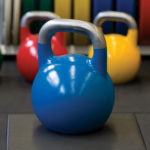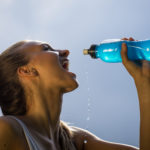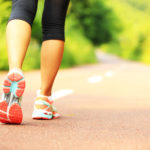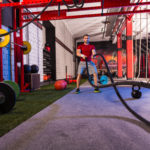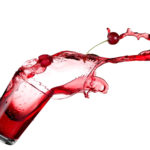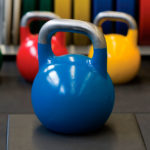
Len Kravitz, PhD
Article Archive
Petrofsky, J.S., et al. 2015. Cold vs. heat after exercise—Is there a clear winner for muscle soreness. Journal of Strength and Conditioning Research, 29 (11), 3245–52.
Read MoreWith research studies so easy to find on the Internet, fitness professionals are regularly bombarded by clients asking for interpretations.
Unfortunately, reading and interpreting scientific articles can get frustrating when terminology is unfamiliar and writing styles are wordy or awkward. Scientific journals try to communicate research findings as clearly as possible, but journals often use a highly stylized voice that makes it difficult for the applied professional to grasp the meaning of published studies.
Read MoreTo read more about how to prevent weight regain and bolster metabolic health, please see “New Clues to Prevent Weight Regain” in the online IDEA Library or in the January 2016 print issue of IDEA Fitness Journal. If you cannot access the full article and would like to, please contact the IDEA Inspired Service Team at (800) 999-4332, ext. 7.
Read MoreIf you have clients with high blood pressure or health problems that prevent them from using high-intensity interval training, then this study is for you.
The research explores peripheral heart action (PHA) training, a system of conditioning developed by Arthur Steinhaus, PhD, in the 1940s (Piras et al. 2015). PHA aims to keep blood circulating consistently during a resistance training session. Five to six exercises are performed sequentially at a medium intensity—with no rest between them; the exercises alter- nately stress upper- and lower-body muscles (Piras et al. 2015).
Read MoreResistance training can be a big help to people who either have type 2 diabetes or are at risk of developing it. Ideally, trainers should combine cardiovascular and resistance training to help clients prevent or manage type 2 diabetes, but cardiovascular exercise isn’t always a good fit. In those cases, resistance training may be the only option available.
Read More Emerging research suggests tart cherry juice has a unique blend of
powerful anti-inflammatory and antioxidant agents that help athletes and
exercise enthusiasts recover faster from exhaustive exercise. This
discovery is attracting growing interest among fitness professionals.
The growing body of evidence on the health risks of sitting for hours on
end has a lot of exercise pros wondering: Should we encourage clients to
use standup desks or workstations that allow moderate physical activity?
Emerging research suggests it’s worth a try.
Read MoreIn May 2015 in San Diego, ACSM’s 62nd annual meeting brought together thousands of professionals from around the globe in more than 70 disciplines to exchange research, present new clinical techniques and share scientific advancements in public health, physical activity, sports medicine and exercise science. This article covers just one of six studies reviewed.
Read MoreWith research studies so easy to find on the Internet, fitness professionals are regularly bombarded by clients asking for interpretations.
Unfortunately, reading and interpreting scientific articles can get frustrating when terminology is unfamiliar and writing styles are wordy or awkward. Scientific journals try to communicate research findings as clearly as possible, but journals often use a highly stylized voice that makes it difficult for the applied professional to grasp the meaning of published studies.
Read MoreIt’s not exactly news that physical activity and exercise have powerful health benefits. Indeed, it’s an insight almost as old as recorded history.
In the fifth century BC, the famous Greek physician Hippocrates observed, “All parts of the body, if used in moderation and exercised in labors to which each is accustomed, become thereby healthy and well developed and age slowly; but if they are unused and left idle, they become liable to disease, defective in growth and age quickly” (Kokkinos
&
Myers 2010).
At the annual meeting of the American College of Sports Medicine, thousands of professionals from around the globe in more than 70 disciplines exchange research, present new clinical techniques and share scientific advancements in public health, physical activity, sports medicine and exercise science. This article covers just one of six studies reviewed.
Read MoreIn May 2015 in San Diego, ACSM’s 62nd annual meeting brought together thousands of professionals from around the globe in more than 70 disciplines to exchange research, present new clinical techniques and share scientific advancements in public health, physical activity, sports medicine and exercise science. This article covers just one of six studies reviewed.
Read MoreThe study:
The Energy Cost of Battle Rope Exercise. J. Verdisco et al., Adelphi University, Garden City, New York.
Methodology:
Battle rope (BR) training is very popular in personal training and small-group training programs. BRs generally range from 1 to 2 inches in diameter and are approximately 30–50 feet long. BR workouts typically involve wrapping a single BR around a fixed anchor point. Thus, a 50-foot battle rope means the exerciser has 25 feet in each arm.
Read MoreCardiovascular exercise and resistance training are essential to successful weight management. However, there is a complex, unclear relationship between exercise training during weight loss and free-living energy expenditure after weight loss (Hunter et al. 2015).
Read More Emerging research suggests tart cherry juice has a unique blend of
powerful anti-inflammatory and antioxidant agents that help athletes and
exercise enthusiasts recover faster from exhaustive exercise. This
discovery is attracting growing interest among fitness professionals.
Every year, the science of sports medicine gets better at determining the effectiveness of specific exercise programs—a point made clear at the latest annual meeting of the American College of Sports Medicine.
Read MoreSuspension exercise combines body weight and anchored, seatbelt-like straps to provide an alternative to free weights and machines. The question on a lot of trainers’s minds is whether these strap-based training systems work as well as more traditional resistance training tools. Though research into this question has been somewhat sparse, studies are starting to paint a picture of effective ways to integrate suspension exercise into a workout program.
Read MoreKelleher, A.R., et al. 2010. The metabolic costs of reciprocal supersets vs. traditional resistance exercise in young recreationally active adults. The Journal of Strength and Conditioning Research, 24 (4), 1043–51.
Read More





